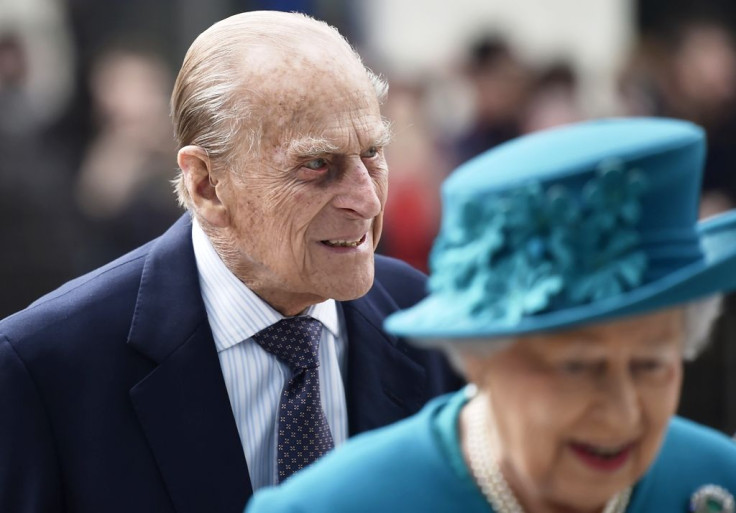Will Prince Philip’s Death Affect Line Of Succession To British Throne?

Prince Philip is not dead. At least, not yet.
Rumors about Philip’s death cropped up early Thursday after Daily Mail reported Queen Elizabeth II’s senior aides were called in for an emergency meeting scheduled later in the day. Unnamed sources told the British tabloid it was “highly unusual” and call for the meeting sparked controversy with assumptions about how the announcement was likely to be about the queen or her husband — both in their 90s.
Read: Why Does Queen Elizabeth II Has Two Birthdays?
Speculation over the 95-year-old prince’s death came only the day after he opened the new Warner Stand at Lord's Cricket Ground in London. Following the Daily Mail report, rumors that Philip died began trending on Twitter.
However, a Buckingham Palace press officer assured TVNZ neither the queen nor Philip is dead. An official statement from the palace is yet to be made.
But in this scenario, it is only reasonable to ask will Philip’s death affect the line of succession to the throne? Or, will his death have constitutional implications?
Since Philip is prince consort and not a king, his death will neither affect the line of succession to the throne nor have constitutional implications. According to English common law, when a woman marries a man, she takes his last name, rank and title. This law also extends to the royal family.
However, when a royal woman with title higher marries another royal man with lower ranked title, she retains her title. Elizabeth II got the title of the queen after the death of her father King George VI, who did not have a son and Elizabeth II was the eldest of the two daughters he had. After she became the queen, Philip became prince consort. Before the wedding, he was given the title Duke of Edinburgh, which will be passed on to the couple’s youngest son Prince Edward, after his death.
Now after the queen’s death, the couple’s eldest son Prince Charles will take the throne to become king. But it remains unclear whether his wife Camilla, Duchess of Cornwall, will become the next queen of England due to her troubled past with Britons over her relationship with Charles while he was still married to Princess Diana.
Charles’ son Prince William, who is the Duke of Cambridge, will be next in line to the throne once his father becomes king. William’s wife Duchess of Cambridge, Kate Middleton is likely to receive the ceremonial title of queen without any claim to the throne. But, their second child — Princess Charlotte — may take the throne to become queen after her elder brother Prince George dies or abdicates before having an heir or if something happens to his heir.
Following is the current line of succession:
1. Prince of Wales, Charles
2. The Duke of Cambridge, Prince William
3. Prince George of Cambridge
4. Princess Charlotte of Cambridge
5. Prince Harry of Wales
6. Duke of York, Prince Andrew
7. Princess Beatrice of York
8. Princess Eugenie of York
9. Earl of Wessex, Prince Edward
10. James, Viscount Severn, Edward’s son
11. Lady Louise Windsor, Edward’s daughter
12. Anne, Princess Royal
13. Peter Phillips, Anne’s son
14. Savannah Phillips, Anne’s granddaughter
15. Isla Phillips, Anne’s granddaughter
16. Zara Tindall, Anne’s daughter
© Copyright IBTimes 2025. All rights reserved.






















